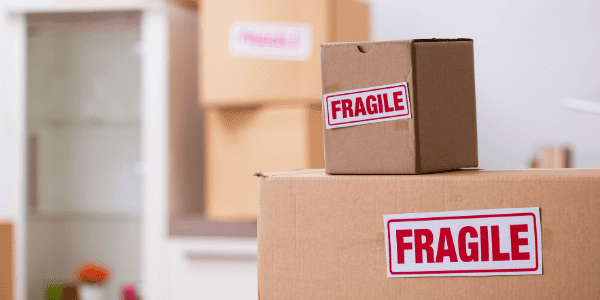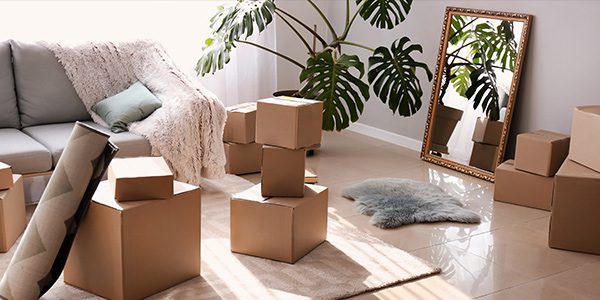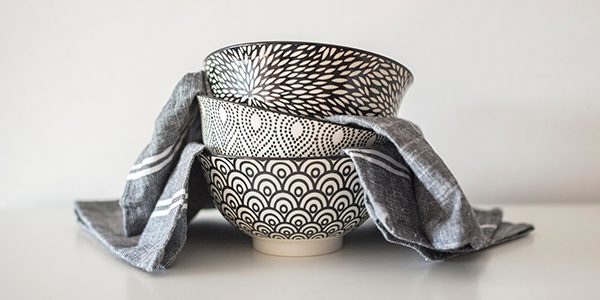How to Pack the Most At-Risk Items During a Move

When moving to a new home, broken or damaged items are one of the biggest concerns. While most items in your home will easily survive the move, some items are more fragile than others. These fragile items will require extra care to ensure they make it to their destination safely. Start packing well in advance to avoid a rushed job, and invest in the correct packing supplies. Mark your fragile items clearly, and in large font so you and your moving company knows to treat them with care. The following are the most fragile, at-risk items during a move.
The Most At-Risk Items During a Move

Houseplants
You may not think of plants as “fragile”, but they’re living things and can easily become damaged from the move. To ensure your houseplants survive the move, you’ll need to pack them properly. This includes repotting them into plastic pots. After that is done, wrap the bottom of the plant with a plastic bag to avoid soil spilling everywhere. Line the bottom of the moving box with bubble wrap or packing paper. Then, place the plants in a box and stuff any empty space with crumpled packing paper. Poke holes into the box to allow for airflow. Write LIVE PLANT and FRAGILE in large letters on the outside of the box.
Mirrors
Mirrors are one of the most fragile items you’ll need to pack for your move. For a full tutorial on packing your mirror, check out our entire blog post dedicated to mirror packing. The best option for packing a mirror is to use a mirror box, as they are much more form-fitting than a standard box. Otherwise, create your own custom box by breaking down larger boxes and shaping them to your mirror. Before packing your mirror, place a large “X” across the front. Cut two pieces of cardboard to size and affix them to the front and back of your mirror. Then, wrap the mirror completely in packing paper. Next, wrap it again in a layer of bubble wrap. Create a bed of crumpled packing paper at the bottom of your box and slide the mirror in. Fill any extra space with more crumpled packing paper. Write FRAGILE, HANDLE WITH CARE, and DO NOT LAY FLAT in large, bold letters on the box.
Artwork
Make sure to leave yourself plenty of time, as properly packing artwork can be a time-consuming task. Before packing your artwork, make sure to remove anything that may cause scratches or tears like sharp accessories or jewelry. Avoid wearing anything with a zipper. Wear a pair of cotton gloves, as the natural oils from your hands may stain the paint, frame, or canvas of your artwork. Start by securing a piece of glassine paper over your painting. Once secure, wrap the artwork in a storage blanket or bubble wrap and secure it with packing tape. Reinforce both sides with hardboard panels or thick poster board and secure again with packing tape. Write FRAGILE on the box.
Dishware
Packing dishware is another necessary, yet a time-consuming task that you definitely won’t want to skip. For plates, wrap them completely in packing paper. Then, stack the wrapped plates and wrap the entire stack in packing paper. Use a dish pack box or small box when packing plates. Pack the plates vertically to help avoid shattering. Use at least 2 layers of crumpled packing paper on the bottom of the box for a cushion. For extra fragile plates, wrap them again with a dishtowel. Never use newspaper to stuff, as it may transfer ink onto your dishes. Remember to write FRAGILE and THIS SIDE UP on your box.
Cups and Glasses
Packing cups and glasses will be similar to packing dishes. Start by placing 2 layers of crumpled packing paper into the box. Wrap stems and handles with crumpled paper. Stuff cups and glasses with wads of packing paper or rags. Wrap the glasses entirely and tape to secure. Place the heaviest items in the box first to avoid breakage. Fill any empty space with more packing paper. Write THIS SIDE UP and FRAGILE on the box.
Taking the time to properly pack these fragile items will help ensure that they all make it safely to your new home. For more tips on packing and moving, sign up for our once-monthly blog newsletter.









